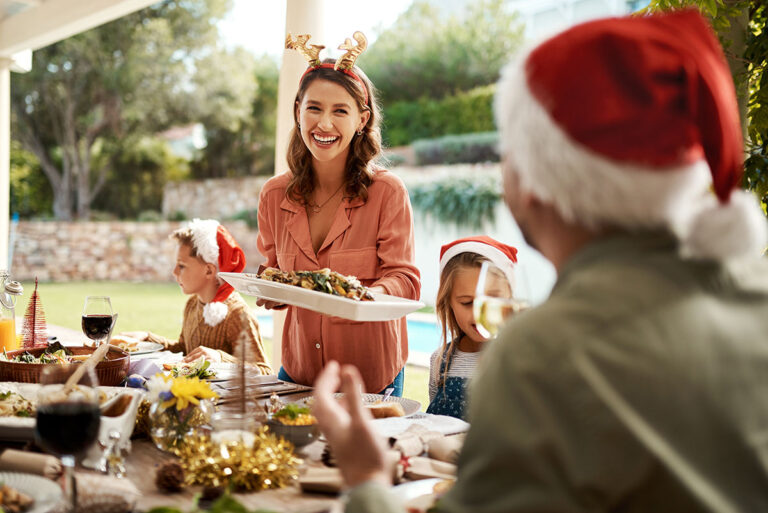Empathy and mythology in this year’s Christmas magazines
Each year, Lynne Freeman and I do a visual analysis of major women’s magazines’ Christmas editions in the UK and Australia
We do this because we believe that magazines in particular and media in general reflect and to an extent shape popular culture. We are also fascinated by consumer mythology, rituals and liminality.
The 2022 magazines were a surprise
We have all seen massive social disruptions as we watched the uphills and downhills of COVIDl9 affecting our social and family life in some unpredictable ways. Extreme weather events have disrupted normal household living for many people. On top of that, inflation and energy prices are putting massive pressure on household budgets.
Given the similar economic and social status of the two countries, does it surprise you that the difference between the UK’s Good Housekeeping and Australia’s Australian Women’s Weekly is HUGE? I will say it again: HUGE.
This year Good Housekeeping reduced the pressure
In the past, the UK’s GoodHousekeeping magazine presented a traditional ‘turkey and all sorts of side dishes’ meal on a table full of lovely crockery and Christmas decorations like crackers (‘bonbons’ in Australia) and lots of red and green. They also typically offered a ‘cheat’s’ menu for those of us who lacked the budget or motivation to create the whole feast – but it was never good to be called a cheat!
“It won’t blow the budget”. This year, recognising budget constraints for everyone, the editorial gave examples of meals that used less energy (no more 4 hours in the oven!). There was no ‘cheat’s’ menu. They even suggest making a meal out of sausage meat. There is a bit of a feeling of wartime restraint and ‘make do’ here, or am I imagining that?
Don’t try to impress. Unlike previous years when there was a lot of social pressure to conform to the traditional ‘over the top’ Christmas meal, this year GH specifically calls that out. Don’t try to impress they say, in case you “overspend”.
From a visual point of view, it also looked as if someone has done their very best to mix their usual crockery with some stuff they found in grandma’s cupboard. This takes away the usual implied pressure to magically find perfectly matched crockery and cutlery for the number of guests you happen to have for Christmas lunch this year.
The message seemed to be: adapt in difficult times. Do what makes you feel comfortable.
Australian Women’s Weekly promoted Aussie mythology and perfection
This year’s Australian Women’s Weekly is almost a masterclass in visual mythologising. With Christmas recipes providing the structure, the magazine weaves several stories that reinforce some traditional Aussie myths: that the ‘real’ Australia is rural Australia; and that successful migrant families take on Aussie traditions but also retain some of their own.
One of those stories is in a section entitled ‘The Good Life’. It is called ‘Christmas in the country’. In this story, we see:
Family traditions. An extensive blonde-haired family sitting around an outdoor table in the sun. The narrative promotes the idea of family traditions by showing multiple generations of a family sitting around a well-worn table with well-worn crockery.
Individual contribution. Almost every recipe has someone’s name attached to it. Examples were: paternal grandmother Mary’s ‘best meringues’, ‘Will’s crunchy wild rice and currant salad’. and ‘Annie’s ice-cream pudding’. The message here is social as much as it is culinary – it privileges the passing down of recipes and skills through generations as well as allowing for younger family members to create their own.
The Aussie migrant story. This is a family of Danes who start their Christmas Eve meal with traditional Danish rice pudding, but the rest of meal seems to be Australian.
But if country mythology is not your thing, the Weekly also offers ‘the perfect pork roast’ or an ‘elegant feast’ – with some daunting looking recipes and gold-edged crockery. The magazine also features a section on ‘luxe’ and ‘heritage’ crockery and serving dishes.
It seems mostly a message of ‘business as usual’ as long as you keep spending to create and maintain traditions to make you feel secure.
What do you think?
Do you think that Good Housekeeping reflects what is happening in the UK? Do you think Australian Women’s Weekly reflects what is happening in Australia? I would love to know.
What about where you live? How are the media representing Christmas this year?

We would love to hear from you, and are always happy to talk through research methods and options with you, if you are not sure what you need. Why not get in touch for a free, obligation-free, and confidential conversation.
Find out more about Susan Bell Research.






